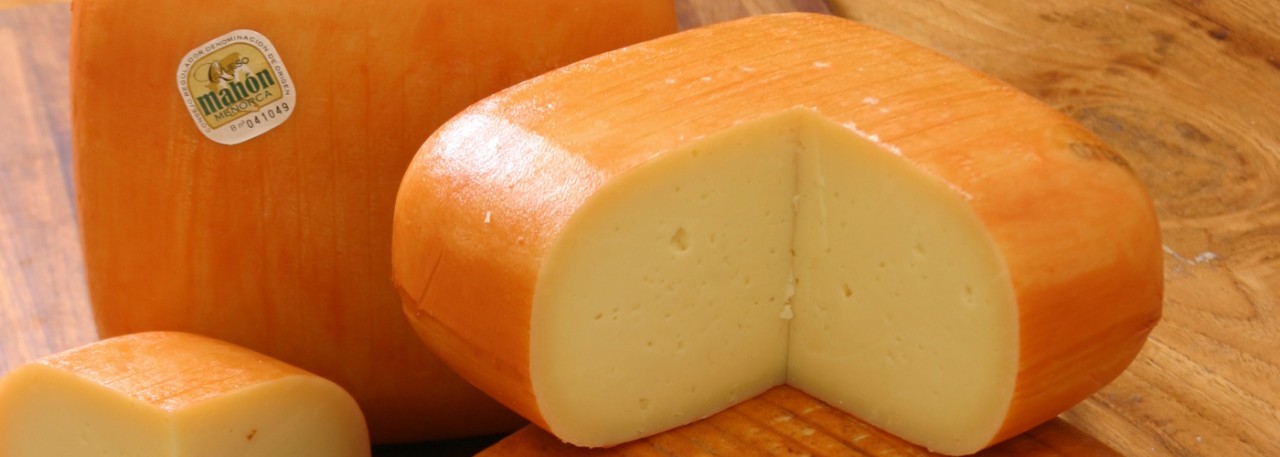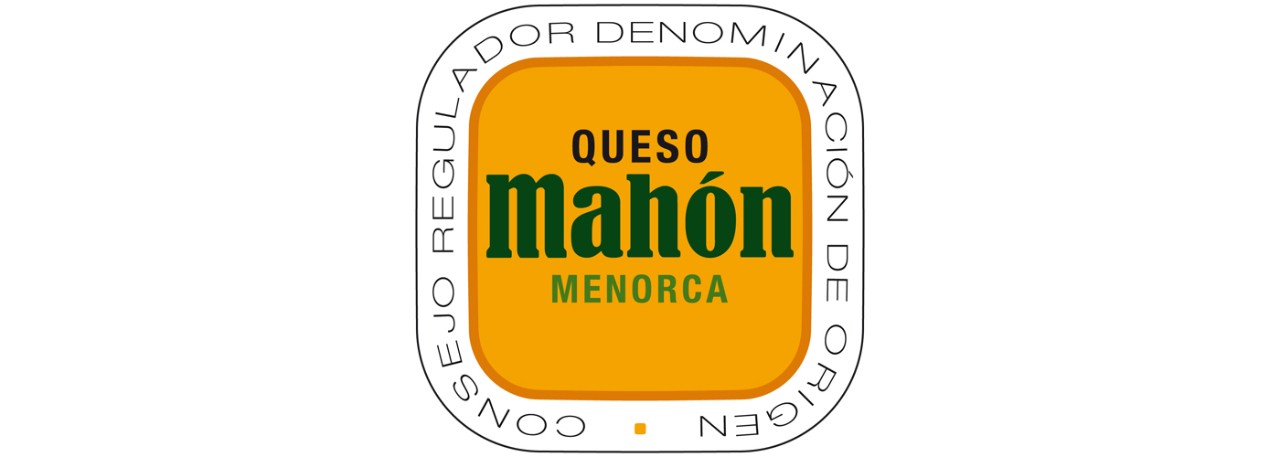.png.transform/rendition-xs/image_image%20(1).png)
Mahón-Menorca PDO
Pressed cheese made from whole cows’ milk from Friesian, Menorcan and/or Brown Swiss cows with, occasionally, a maximum of 5% of ewes’ milk from the Menorcan breed of sheep. Ripened for a minimum of 21 days.
Tasting notes
The flavor is generally mildly acidic. The young cheese is mild, the semi-cured has a slight flavor of butter and nuts, especially hazelnuts, and medium persistence in the mouth. The flavor of the cured cheese is complex and intense, with touches of aged wood, tanned leather or the ripening chamber, Its piquancy increases with maturity, and persistence in the mouth is long.
The cheeses have lactic aromas, with a slight reminiscence of butter and a characteristic acidity, all of which increase during ripening.
The young cheese is soft and elastic, the semi-cured cheese is firmer and easy to cut, and the cured cheese has a firmer, harder, less elastic texture. When well-ripened, it may be crumbly or flaky when cut.
Other notes
The shape is a parallelepiped, with a square base and sides and rounded edges. The height is 5-9 cm (2-3½”) , with a ratio of 2:3 between the side and the height for young cheeses, and 2:4 for semi-cured and cured cheeses. The weight is 1-4 kg (2.2-8.8 lb).
The rind is compact and greasy and not very well-developed in the young cheeses, white-to-yellowish in young cheeses, orange or light brown in the artisan semi-cured cheese, and brown in the cured product. The top of the artisan cheeses is marked by the folds of the cloth used to wrap the cheese during molding.
The paste is yellow-to-ivory in color, with a few irregular, more or less round holes, in varying sizes but never larger than a pea. The fat content may never be less than 38% of dry matter, and total dry matter must never be less than 50%.
Production / Processing method
The milk must be whole and clean, without any type of preservative and with a balance between fat and protein in line with the seasonal characteristics of the milk of the different breeds used so that the final fat content is never less than 38% of dry matter.
The artisan dairies use raw milk, fresh from the cow. The industrial plants are allowed to use milk that has been processed or preserved in some way. The right amount of animal rennet is used to ensure that coagulation takes place in a minimum of 30-40 minutes at a constant temperature of 30-34ºC (86-93ºF). This temperature must also be maintained during cutting and draining of the curds.The curds are cut until large pea size and left to stand for about ten minutes before the whey is drained off.
The cheeses are molded by hand, wrapped in a square cotton cloth, the fogasser, and hung from the four corners. They are then placed on a table, the whey is removed and the paste is manually pressed and tied. They are then pressed in a machine which leaves the mark of the folds of the cloth and the cords imprinted on the top.
Special molds can also be used to give the characteristic shape. Pressing lasts for about ten hours, after which the cheeses are submerged in brine at saturation point for a maximum of 48 hours at 10-15ºC (50-59ºF). They are then aired in ventilated rooms for 3-4 days, when the surface flora begins to develop. They then remain in ripening chambers until ready for sale: 21-60 days for young cheeses, 60-150 days for semi-cured cheeses and over 150 days for cured cheeses.
During ripening, the cheeses are regularly turned and cleaned, and the rind is rubbed with olive oil and pimentón (a Spanish type of paprika). This operation is repeated several times and prevents the rind from drying out, repels insects and gives the cheese its characteristic color and appearance.
Geography / Relief and climate
The island of Menorca is the second largest in the Balearic archipelago. It also lies furthest to the east and north.
This rocky island covers about 689 km2 (428 sq miles) and comprises two main areas: the rough Tramontana in the north, and Migjorn in the south where the relief is gentler and more even although there are deep ravines.
The highest point on the island is Mount Toro at 358 m (1,175 ft).There are also two main geological areas. The coastal area stretching from the port of Mahón to cape Favaritz is made up of primary terrains from the Carboniferous period. The southern half is crossed by deep ravines and the soils are chalky and stony, from Miocene sediments.
The climate is mild, not exceeding 34ºC (93ºF) in summer nor dropping below 5ºC (41ºF) in winter. The average temperature in summer is 23ºC (73ºF) and in winter 10ºC (50ºF).
Average annual rainfall is just over 600 mm (23”). This, together with plentiful dew, gives sufficient grazing resources for cattle farming.The sea winds and high moisture levels provide water for pastures, resulting in milk with high acidity and a touch of salinity.
The natural meadows are mostly located on lands that were previously cultivated, with cattle-rearing having taken over from agriculture. They grow dense, high grasses, mostly Graminaceae and Leguminosae, which are very valuable for pastures.The river system comprises dry torrent beds and ravines in which water only flows after heavy rainfall.
Regulatory Council
Ctra. d' Es Grau, km 0,5
07700 Mahón (Menorca)
Islas Baleares
Tel: (+34) 971 362 295
quesomahon@quesomahonmenorca.com
www.quesomahonmenorca.com
Sources:
- Spanish Ministry of Agriculture
The young cheese is soft and elastic, the semi-cured cheese is firmer and easy to cut, and the cured cheese has a firmer, harder, less elastic texture. When well-ripened, it may be crumbly or flaky when cut.


- Mahon 1
- Mahon 2

Mahón - Menorca (Balearic Islands)
